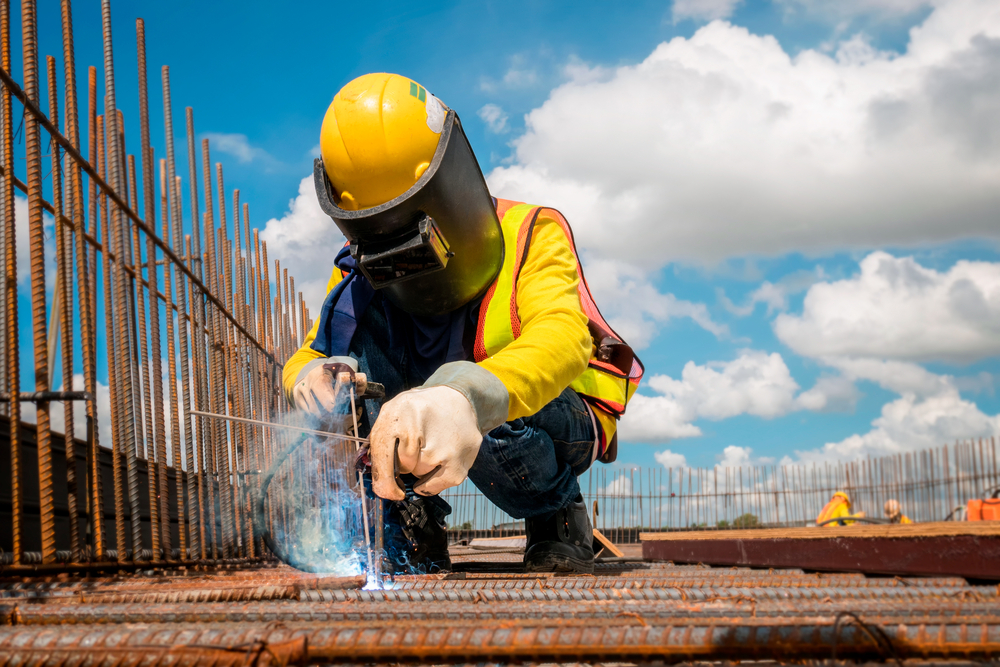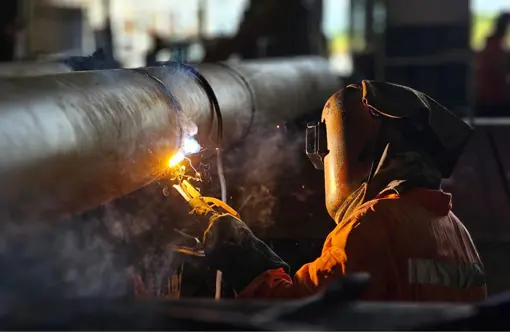All About Welding: Key Insights Into Techniques and Ideal Practices for Success
Welding incorporates a variety of techniques, each fit for specific materials and applications. Understanding these approaches, such as GMAW, SMAW, and TIG, is important for achieving ideal results. Moreover, the best tools and security practices can not be ignored. As preparation and fixing play important duties in the welding process, mastering these components can significantly enhance the high quality of the end product. What are the vital factors that assure an effective weld?
Understanding Various Welding Techniques
Welding techniques incorporate a range of techniques, each suited to particular applications and materials. Amongst the most common techniques are Gas Metal Arc Welding (GMAW), Protected Metal Arc Welding (SMAW), and Tungsten Inert Gas Welding (TIG) GMAW, additionally recognized as MIG welding, is popular for its rate and adaptability, making it optimal for slim materials. SMAW, or stick welding, is favored for its simpleness and effectiveness in exterior settings, specifically with thicker steels. TIG welding uses accuracy and control, making it ideal for complex job and non-ferrous metals (Belgrade Welding). Each technique has its unique advantages and considerations, permitting welders to choose the most effective method based on the task's needs, product kind, and wanted results. Understanding these strategies is necessary for successful welding
Necessary Welding Devices and Tools
While various welding techniques call for particular skills, the right equipment and devices are just as important for attaining high quality results. Vital welding tools includes welding machines, which differ depending on the strategy-- such as MIG, TIG, or stick welding. Safety equipment, consisting of gloves, aprons, and headgears, assurances safety and security and convenience throughout the procedure. Additionally, clamps and fixtures aid protect products in position, making certain accuracy in welds. Consumables like welding rods, cord, and protecting gas are also essential elements that affect the high quality of the weld. In addition, tools such as mills and cutters facilitate surface area prep work and post-weld ending up, adding to an expert outcome. Purchasing high-grade equipment ultimately boosts the performance and effectiveness of welding jobs.
Security Practices in Welding
Appropriate safety methods are necessary in the welding market to shield workers from possible risks. Welders need to put on proper individual protective tools (PPE), consisting of headgears with correct shading, handwear covers, and flame-resistant clothes. Adequate ventilation is vital to reduce exposure to harmful fumes and gases created throughout the welding procedure. Furthermore, workers should be learnt the right handling of welding equipment to avoid mishaps. Fire precaution, such as keeping flammable products away from the welding area and having fire extinguishers readily available, are essential. Routine examinations of equipment and workspaces can aid identify potential risks prior to they lead to mishaps. By adhering to these safety methods, welders can develop a much safer working environment and lessen dangers related to their profession.
Preparing Products for Welding
Preparing materials for welding is an essential step that greatly influences the top quality and stability of the last product (Belgrade Fabrication). Proper prep work includes cleaning up the surfaces to remove contaminants such as oil, dirt, and rust, which can jeopardize the weld. Strategies such as grinding, fining sand, or utilizing solvents are generally used to accomplish a tidy surface. Additionally, guaranteeing that the materials fit with each other snugly is essential; gaps can lead to weak welds. It's also essential to take into consideration the positioning and positioning of the components, as this will certainly influence the simplicity of welding and the last result. Selecting the ideal filler material and guaranteeing compatibility with the base steels is crucial for achieving strong, resilient welds.
Tips for Getting High-Quality Welds
Achieving high-quality welds needs interest to information and adherence to finest techniques throughout the welding procedure. Proper joint preparation is crucial, making certain surface areas are tidy and totally free from contaminants. Selecting the appropriate filler product and welding strategy based upon the base metals is essential for optimal bonding. Preserving consistent travel speed and angle while welding can avoid issues and advertise harmony. Furthermore, controlling heat input is necessary; extreme heat can lead to bending and compromised joints. Frequently examining the welds throughout the process enables instant changes if needed. Using ideal post-weld treatments, such as cleansing and stress and anxiety alleviation, can boost the resilience and integrity of the weld, eventually making sure a successful result.
Fixing Usual Welding Issues
Welding frequently provides difficulties that can affect the high quality and honesty of the end product. Typical issues such as porosity, irregular weld grains, and overheating can emerge, each requiring details fixing techniques. Recognizing these problems is important for welders to boost their skills and accomplish perfect outcomes.
Porosity Troubles Clarified
Although porosity can commonly be overlooked, it remains a vital issue in welding that can endanger the honesty of a finished product. Porosity refers to the existence of tiny gas pockets within the weld bead, which can weaken the joint and lead to premature failure. This problem normally emerges from impurities, wetness, or incorrect shielding gas insurance coverage throughout the welding process. To minimize porosity, welders should verify that the base products are tidy and completely dry, make use of suitable protecting gases, and maintain regular welding criteria. Consistently evaluating the equipment and atmosphere can additionally help recognize prospective concerns before they show up in the weld. Resolving porosity properly is necessary for achieving strong, sturdy welds that fulfill high quality standards.

Irregular Weld Beans
Irregular weld beads can greatly impact the high quality and toughness of a completed item. Different elements add to this problem, consisting of improper travel rate, wrong amperage setups, and inconsistent electrode angles. When the welder relocates as well promptly, a grain may appear slim and lack penetration, while relocating too gradually can cause too much buildup. In addition, using the wrong amperage can result in either damaging or excessive spatter, both of which concession weld stability. The welder's strategy, such as inconsistent lantern motion, can additionally cause uneven bead appearance. To mitigate these troubles, welders ought to concentrate on maintaining stable, controlled motions and ensuring appropriate equipment settings to achieve uniformity in their welds. Uniformity is vital to achieving reputable and strong welds.
Overheating and Warping Issues
Too much warm during the welding procedure can bring about significant overheating and warping problems, affecting the architectural integrity of the workpiece. These problems typically manifest as distortion, which can compromise placement and fit-up, making additional assembly challenging. Elements adding to overheating include the selection of welding specifications, click to read more such as voltage and take a trip speed, as well as the sort of material being bonded. To minimize these problems, welders should keep consistent travel speed and appropriate heat input while keeping track of the work surface temperature level. In addition, pre-heating or post-weld heat treatment can assist ease anxieties created by quick cooling - Belgrade Fabrication. Regular evaluation and adherence to finest methods are necessary in avoiding overheating and ensuring the long life and integrity of welded frameworks
Often Asked Questions
What Are the Career Opportunities in the Welding Sector?
The welding industry supplies varied career possibilities, including settings as welders, designers, examiners, and educators. Experts can work in production, building and construction, aerospace, and automobile fields, gaining from strong need and affordable incomes in different duties.
Exactly How Can I Improve My Welding Rate Without Giving Up High Quality?
To boost welding rate without sacrificing top quality, one matheson welding must exercise reliable techniques, maintain equipment, enhance settings, and boost hand-eye control. Regular training and seeking feedback can additionally greatly add to achieving much faster, top quality welds.
What Certifications Are Readily Available for Welders?
Countless certifications exist for welders, consisting of those from the American Welding Society (AWS), the National Center for Building Education And Learning and Research (NCCER), and various industry-specific companies. These credentials improve employability and demonstrate ability effectiveness.
Exactly How Does Welding Affect the Characteristics of Metals?
Welding affects the homes of steels by altering their microstructure, which can bring about modifications in stamina, ductility, and solidity. Warmth input and air conditioning prices throughout the procedure greatly influence these product qualities.
Can I Bonded Dissimilar Metals With Each Other?
